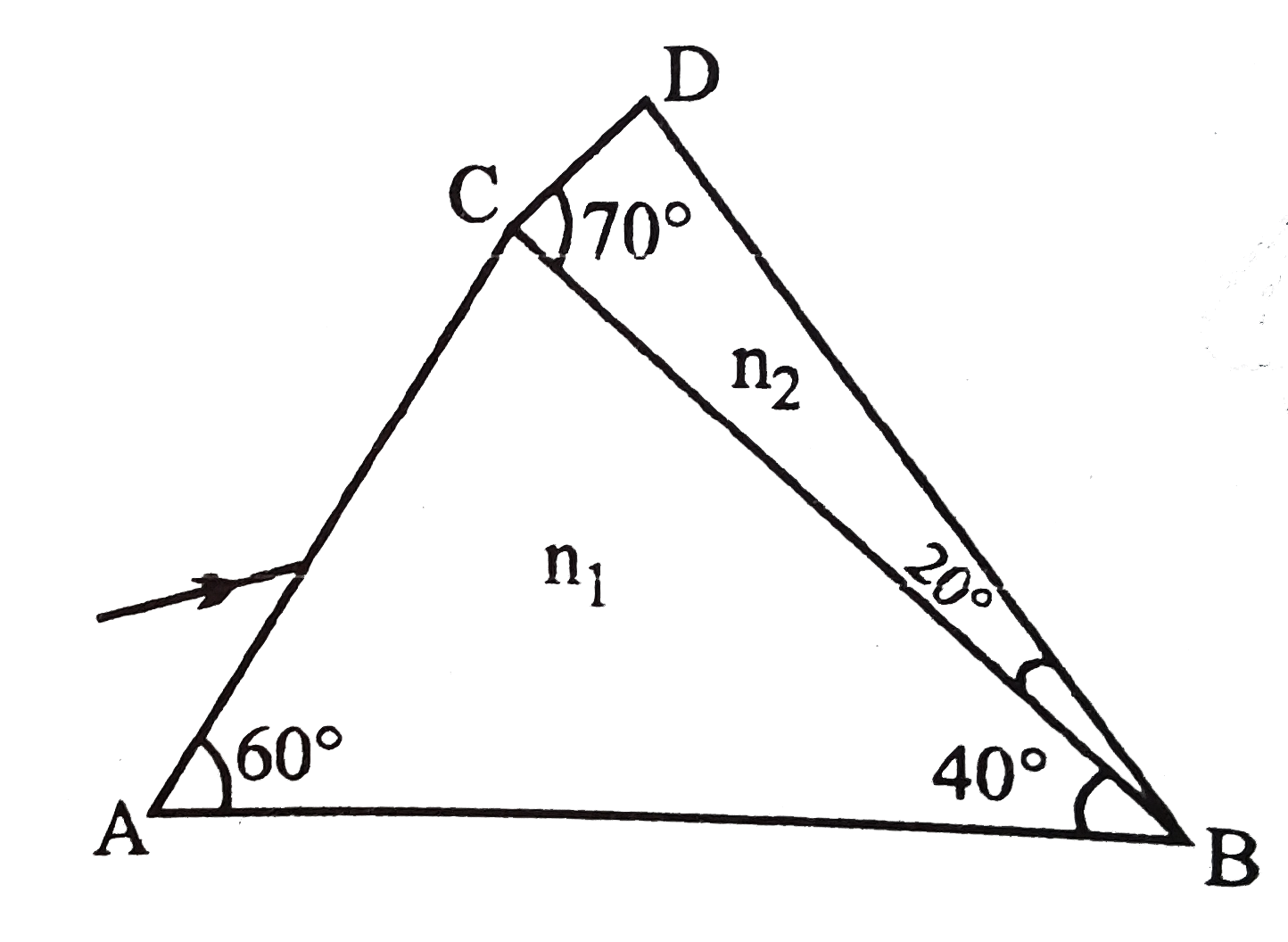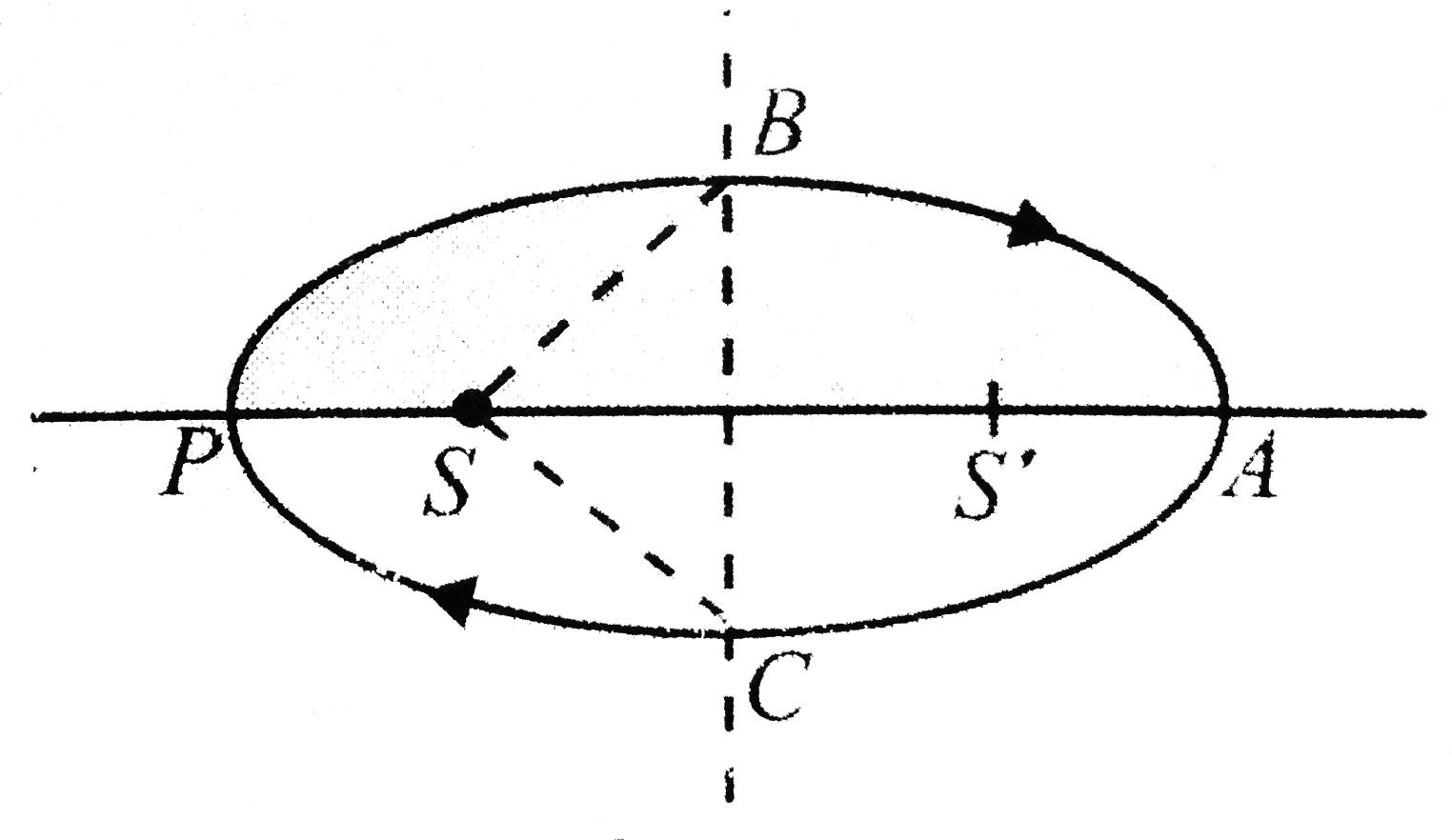Let the speed of the planet at the perhelion Pin Fig. 8.1 (a) be vp and the sun-planat distance SP be rp. Relate (rp'vp) to the corresponding quantities at the aphelion (rA.vA) will the planat take equal times to traverse BAC and CPB?
∵ angular momentum L=mPrPvP=mPrAvA
∴vPvA=rArP since rA>rP,vP>vA.
The area SBAC bounded by the ellipse and the radius vectors SB and SC is larger than SBPC in Fig. From Kepler's second law, equal areas are swept in equal time intervals. Hence the planet will take a longer time to traverse BAC than CPB.
Topper's Solved these Questions
- GRAVITATIONBook:ALLENChapter:GRAVITATIONExercise:EXERCISE 1
Explore 93 Videos
- GRAVITATIONBook:ALLENChapter:GRAVITATIONExercise:EXERCISE 2
Explore 26 Videos
- GRAVITATIONBook:ALLENChapter:GRAVITATIONExercise:BOX-3
Explore 8 Videos
- GEOMETRICAL OPTICSBook:ALLENChapter:GEOMETRICAL OPTICSExercise:subjective
Explore 14 Videos
- KINEMATICS-2DBook:ALLENChapter:KINEMATICS-2DExercise:Exercise (O-2)
Explore 46 Videos
Similar Questions
Mass particles of 1 kg each are placed along x-axus at x=1,2,4,8,....∞. Then gravitational force o a mass of 3 kg placed at origin is (G= universal gravitation constant) :-
View SolutionTwo satellites of earth, S1andS2 , are moving in the same orbit. The mass of S1 is four times the mass of S2 . Which one of the following statements is true ?
View SolutionIf the acceleration due to gravity at the surface of the earth is g, the work done in slowly lifting a body of mass m from the earth's surface to a height R equal to the radius of the earth is
View SolutionA prism of refractive index n1 & another prism of reactive index n2 are stuck together without a gap as shown in the figure.The angle of the prisms are as shown. n1&n2depend onλ,the wavelength of light according to n1=1.20+10.8×104λ2&n2=1.45+1.80×104λ2 where λ is in nm.

(i)Calculate the wavelength λ0for which rays incident at any angle on the interfaceBCpass through without bending at that interface.
View SolutionA particle is moving in the x-y plane. At certain instant of time, the components of its velocity and acceleration are as follows: vx=3ms−1,vy=4ms−1,ax=2ms−2anday=1ms−2. The rate of change of speed at this moment is
View SolutionLet the speed of the planet at the perihelion P in figure be v_(P) and the Sun planet distance SP be r_(P) . Relater r_(P), v_(P) to the corresponding quantities at the aphelion (r_(A),v_(A)) . Will the planet take equal times to transverse BAC and CPB ?
View Solutionमान लीजिए किसी ग्रह की उपसौर P पर (चित्र) चालू vP है, तथा सूर्य व ग्रह की दूरी SP=rP है। {rP,vP} तथा अपसौर पर इन राशियों के तदनुरूपी मान {rA,vA} में संबंध स्थापित कीजिए। क्या ग्रह BAC तथा CPB पथ तय करने में समान समय लेगा?
View SolutionLet the speed of the planet at the perihelion P in figure be vP and the Sun planet distance SP be rP. Relater rP,vP to the corresponding quantities at the aphelion (rA,vA). Will the planet take equal times to transverse BAC and CPB?

View Solutionमान लीजिए किसी ग्रह की उपसौर P पर (चित्र में) चाल VPहै तथा सूर्य व ग्रह की दूरी SP=rp है। (rP,VP) तथा अपसौर पर इन राशियों के तदनुरूपी मान (r_(A),V_(A)) में संबंधस्थापित कीजिए। क्या ग्रह BAC तथा CPB पथ तय करने में समान समय लेगा?
View SolutionA speed of the palnet at the perihelion P be V_(p) and the sun -planet distance SP be r_(P) as shown in fig. Relate {r_(p),v_(p)} to the corresponding quantities at the aphelion {r_(A),V_(A)} . Will the planet take equal times to traverse BAC and CPB?
View SolutionLet the speed of the planet at the perihelion pin be vP and the Sun-planet distance SP be r_(P) . Relate {r_(P), v_(P)} to the corresponding quantities at the aphelion {r_(A), v_(A)} . Will the planet take equal times to traverse BAC and CPB ?
View SolutionLet the speed of the planet at the perihelion pin be vP and the Sun-planet distance SP be r_(P) . Relate {r_(P), v_(P)} to the corresponding quantities at the aphelion {r_(A), v_(A)} . Will the planet take equal times to traverse BAC and CPB ?
View SolutionLet the speed of the planet at the perihelion P in figure be v_(P) and the Sun planet distance SP be r_(P) . Relater r_(P), v_(P) to the corresponding quantities at the aphelion (r_(A),v_(A)) . Will the planet take equal times to transverse BAC and CPB ?
View SolutionLet the speed of the planet at the perihelion P be V_P and the sun-planet distance SP be r_p . Relates (r_p,V_P) to the corresponding quantities at aphelion (r_A,V_A) . Will the planet take equal times to tranverse BAC and CPB ?
View SolutionLet the speed of the planet at the perihelion pin be vP and the Sun-planet distance SP be rP. Relate {rP,vP} to the corresponding quantities at the aphelion {rA,vA}. Will the planet take equal times to traverse BAC and CPB ?
View SolutionLet the speed of the planet at the perihelion pin be vP and the Sun-planet distance SP be r_(P) . Relate {r_(P), v_(P)} to the corresponding quantities at the aphelion {r_(A), v_(A)} . Will the planet take equal times to traverse BAC and CPB ?
View Solution
